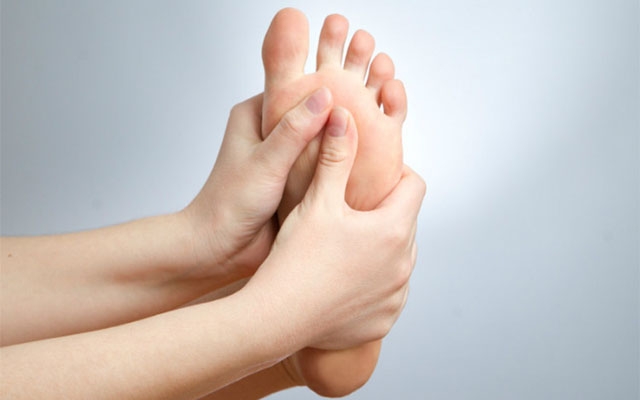Reasons Your Toes Keep Cramping & How To Prevent It
March 8 2018Most of the time, these cramps can be treated with DIY remedies.

You know that strange thing when your toes start twitching and involuntarily twisting around each other? Or when you wake up in the middle of the night with your foot flexed, immovable, and shooting with pain? What is with those cramps?
“They’re usually a warning that you’re overdoing it,” says Dr Charles Kim, a musculoskeletal rehab specialist. “But if you feel cramping getting worse and not relenting, you should talk to a doctor.” Frequent foot cramping may signal an underlying medical condition involving the circulatory or central nervous system, so see your physician if your muscle spasms make you uneasy or interfere with your daily life.
But most of the time, toe cramps have a few common causes and can be treated with some DIY interventions.
The Causes
Toe cramps have various triggers, but overuse, dehydration, and mineral deficiencies (particularly, potassium, calcium, and magnesium) are some of the most common culprits, according to Kim. When you exercise, you sweat out the minerals your muscles need. And that deficiency causes muscle contractions or spasms, which we call cramps. “If you’ve gone for a long run, overexerted yourself, or overtrained, toe cramps are your muscles telling you to dial it back because they can’t take the strain,” says Kim.
Toe cramps also frequently stem from unnecessary strain or restricted blood flow from tight-fitting shoes.
Age, of course, is not kind to your feet either. Toe cramps often appear after 50, when bones lose calcium and muscles lose elasticity and strain to support your body. Also, “as we age, our nerve and vascular function isn’t as robust as it used to be,” says Kim. “That leads to cramping because your nerves, which provide nutrition and messages to your muscles, aren’t fully up to the task.”
The Cures
First, the bad news: There’s no magic cure for toe cramps. And research shows that magnesium supplements seem to make no difference at all.
Now, the good news: You can reduce and prevent toe cramps, assuming you don’t have an underlying condition. Here are four fixes to try:
The right shoes
The path to fewer painful spasms begins with your shoes, says podiatrist Phyllis Ragley. “It’s crucial to find a pair that’s right for your body’s unique mechanics,” Ragley advises choosing a shoe that fits your arch and is neither too stiff nor too flexible. “The right shoe should feel like you’re walking on air,” says Kim. If you’ve been dressing in high heels, try switching to flats instead.
Plenty of hydration
Staying hydrated is essential when it comes to treating foot and toe cramps, says Kim. He recommends replenishing electrolytes after exercising with a sports drink and eating foods high in potassium and calcium.
Working out wisely
If you’re exercising too much, scale it back—you could be putting unnecessary stress on your muscles. And if you’re not exercising enough, start to move. Being sedentary atrophies muscles and decreases circulation. “Marathons are terrible for you, but so is not exercising,” Kim says. “Everything in moderation.”
Stretching well
Ragley also recommends non-weight-bearing stretches like wiggling your toes, spreading them out, and pointing and flexing your feet (give this four foot stretches a try). “It’s crucial as we age to move the feet around in a gentle way to maintain a range of motion,” she says. “And adding some massages and warm foot baths will help to relieve the muscles.”
For medical consultations, call to schedule an appointment with us at 03 5229 5192 (Myers Street Family Medical Practice), 03 5241 6129 (The Cottage Medical Centre), 03 5264 8838 (Torquay Medical Health & Wellness Clinic). For Corporate Care Program, visit Workplace Health & Safety Victoria for details.
Sourced from Prevention.
